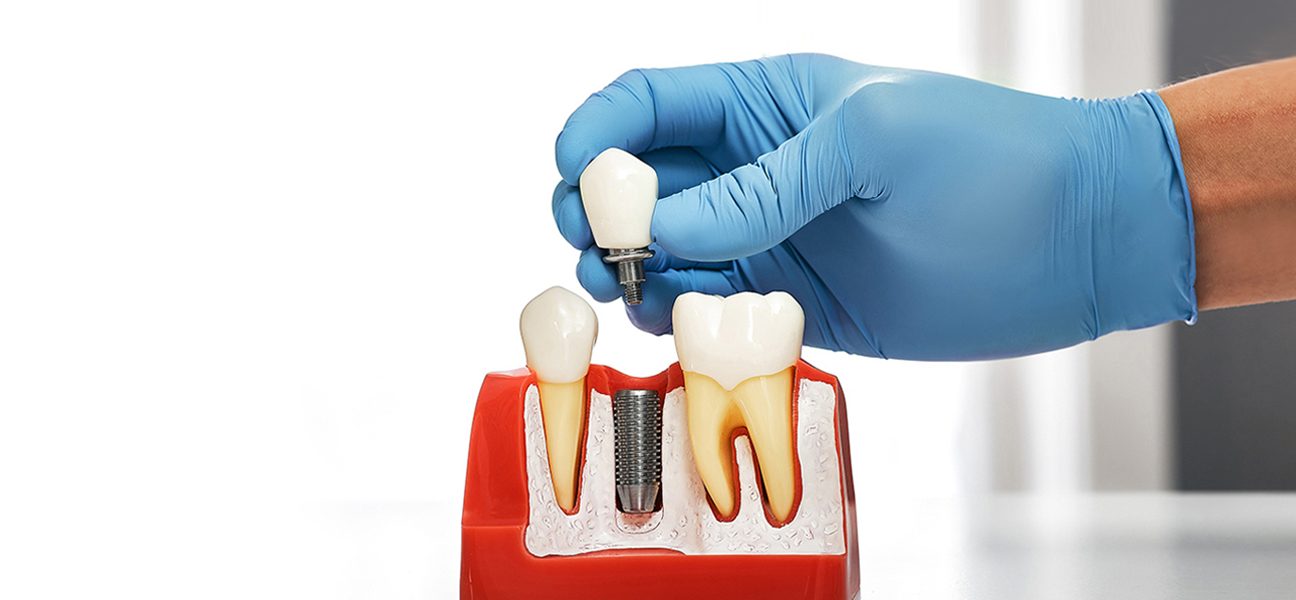What Are Dental Implants? A Comprehensive Guide
Missing teeth affect far more than appearance; they influence how you eat, speak, and feel every day. Dental implants offer a lasting, natural-looking solution. But what are they, really? In this clear, patient-focused blog, discover how implants restore both function and confidence step by step, with no guesswork. Let’s explore how modern dentistry rebuilds more than just your smile.
What Is a Dental Implant?
A dental implant goes beyond a simple replacement, acting like a natural root to preserve jaw health. It’s a complete solution made of three parts:
- Titanium post – Acts like the tooth root and anchors deep into the jawbone.
- Abutment – Connects the post to the visible crown.
- Dental crown – The top part that looks and functions like a real tooth.
Together, these components form a secure and natural-looking replacement.
Unlike dentures, implants stay fixed. Enjoy your meals, conversations, and smiles with confidence, knowing everything stays firmly in place. A well-placed implant feels so real that most patients forget it’s there.
Who Is a Good Candidate for Dental Implants?
Not everyone is ready for implants from the start, but many people qualify with a little planning. Here’s what your dentist looks for:
- Healthy gums
- Strong jawbone density
- No active infections
- Non-smoker (or willing to quit)
Bonus traits:
- Commitment to regular dental visits
- Willingness to follow aftercare instructions
Those with certain chronic conditions, like uncontrolled diabetes, may need extra precautions.
If you’re exploring tooth implant services, your provider will likely take a 3D scan to see what’s happening below the surface. That’s where success begins. Skilled dentists in Roseville, CA, can evaluate your oral health and recommend the best treatment path for you.
Types of Dental Implants
Not all implants are the same. Your mouth, your bone structure, and your goals determine the best choice. Here are a few common options:
- Endosteal implants – Placed directly into the jawbone. Most common type.
- Subperiosteal implants – These implants rest directly on the jawbone beneath the gum, making them ideal for patients with bone loss.
- Zygomatic implants – Anchored in the cheekbone. Used when the upper jawbone isn’t strong enough.
You might also hear terms like:
- Single-tooth implant – Ideal when just one tooth is missing.
- Implant-supported bridge – Best for replacing several missing teeth in a row.
- Full-arch restoration – It replaces an entire upper or lower set of teeth with four or more implants.
Step-by-Step Dental Implant Procedure
The implant process happens in stages. Healing time is essential, but so is precision.
- Consultation and planning
A dentist reviews your oral health, takes digital X-rays, and maps out the treatment.
- Tooth extraction (if needed)
If the damaged tooth is still in place, it’s gently removed.
- Bone grafting (if necessary)
If your jawbone is too soft or thin, bone grafting may be needed to build support.
- Implant placement
The titanium post is precisely inserted into the jawbone. This part takes about an hour.
- Healing phase
Over the next few months, your bone fuses to the implant. This process is called osseointegration.
- Abutment placement
Once healed, the abutment is added. This part connects the implant to the crown.
- Crown placement
Finally, a custom-made crown is secured. It matches the shape and shade of your surrounding teeth.
This step-by-step method ensures strength, comfort, and longevity.
Benefits of Dental Implants
Implants don’t just fill gaps. They restore function and boost self-confidence.
Here’s what you gain:
- Natural appearance – Designed to blend in with your existing teeth.
- Improved speech – No more slipping like dentures.
- Stable bite – Eat apples, steak, or corn without worry.
- No bone loss – Implants stimulate the jawbone, keeping it strong.
- Lasting results – With good care, implants can last decades.
Looking for a dental implant near you? Talk to a trusted provider who uses modern tools and techniques. The quality of your care makes all the difference.
Risks and Potential Complications
Every procedure carries some level of risk, but dental implants have a strong success rate, over 95%. Still, it’s smart to know the possibilities.
Possible risks include:
- Infection at the implant site
- Injury to nearby structures
- Nerve damage (tingling or numbness)
- Implant failure (usually from smoking or poor aftercare)
Most of these problems are avoidable. Choose a skilled team. Follow instructions. Communicate openly. That’s how you protect your results.
Aftercare and Long-Term Maintenance
Think of implants as a second chance for your smile. But just like natural teeth, they need care.
Daily care includes:
- Brushing twice daily with a soft-bristle toothbrush
- Using floss or interdental brushes around the implant
- Rinsing with non-alcoholic mouthwash
Long-term success depends on:
- Regular dental checkups
- Professional cleanings
- Avoiding hard or sticky foods during healing
- No smoking weakens bones and slows healing
Good habits keep your implant healthy and strong. Just like your natural teeth, they need your attention.
The team at Eureka Ridge Dentistry educates patients thoroughly after treatment. You’re never left guessing. Every step is clear.
Final Thoughts: Are Dental Implants Right for You?
Choosing dental implants is a personal step toward lasting confidence and comfort. If you’re ready to restore your smile with precision and care, Eureka Ridge Dentistry is here to help. Book your consultation today and discover if implants are the right fit for you. Reclaim your bite, your smile, and your life one confident step at a time.
